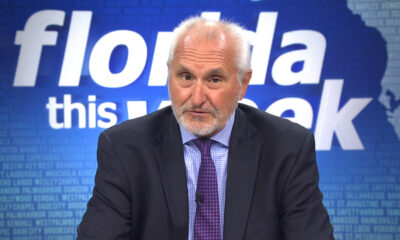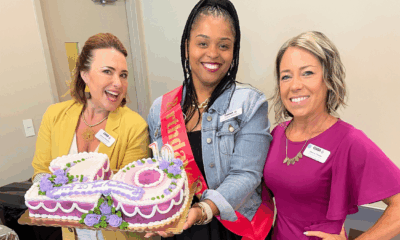Place
Transit-based upzoning initiative trudges forward

Local stakeholders are finally seeing progress on a transit-oriented development (TOD) initiative that could increase density and development options around SunRunner stations.
After years of discussions and advocating from community and business leaders, the city council is set to approve a funding agreement Thursday for land development regulation and zoning amendments between the Pinellas Suncoast Transit Authority (PSTA) and the city.
The $38,000 will support the implementation of the SunRunner Rising Development Study, which recommended rezoning areas near the bus rapid transit stations along its 10.3-mile route. Much of the previous debate centered around the 1st Avenue North and South stops.
While the funding isn’t much, developer Joe Furst said it was critical and long-awaited progress.
“That is the big moment that we’ve sort of been waiting for, to actually kick the work into gear,” Furst said. “To hopefully get through workshops, community outreach and, obviously, a framework and specific zoning guidelines and code – hopefully, to be completed around the end of this year.
“We’ve really been in a holding pattern until this contract was complete and the funding secured.”

Joe Furst, founder of Miami-based Place Projects.
Furst, founder of Miami-based Place Projects, was looking for opportunities in St. Pete when he discovered the Deuces Live and Warehouse Arts District’s action plan and found it compelling. Local stakeholders hope to increase connectivity, livability and green space in the industrially zoned area, and Furst believes in the vision.
In early 2019, he bought over seven acres of perpetually underutilized land between 3rd and 5th Avenues South along the 22nd Street corridor. His property, primarily vacant sans a tow yard, is adjacent to 3 Daughters Brewing and the Morean Center for Clay.
Furst utilized the same planning agency behind the action plan to promote cohesiveness and began advocating for an industrial mixed-use rezoning initiative, I-Mix. The changes would allow industrial operations while creating opportunities for much-needed residential and commercial uses.
However, the PSTA TOD study was ongoing, and Furst said the “publicly guided policy initiatives needed to take precedence over anything that I was thinking, or the community was thinking.”
With his related expertise and the support of local stakeholders, Furst assumed a leadership position in the transit-based rezoning efforts. In addition, his property is just over a quarter mile from the Grand Central SunRunner station.
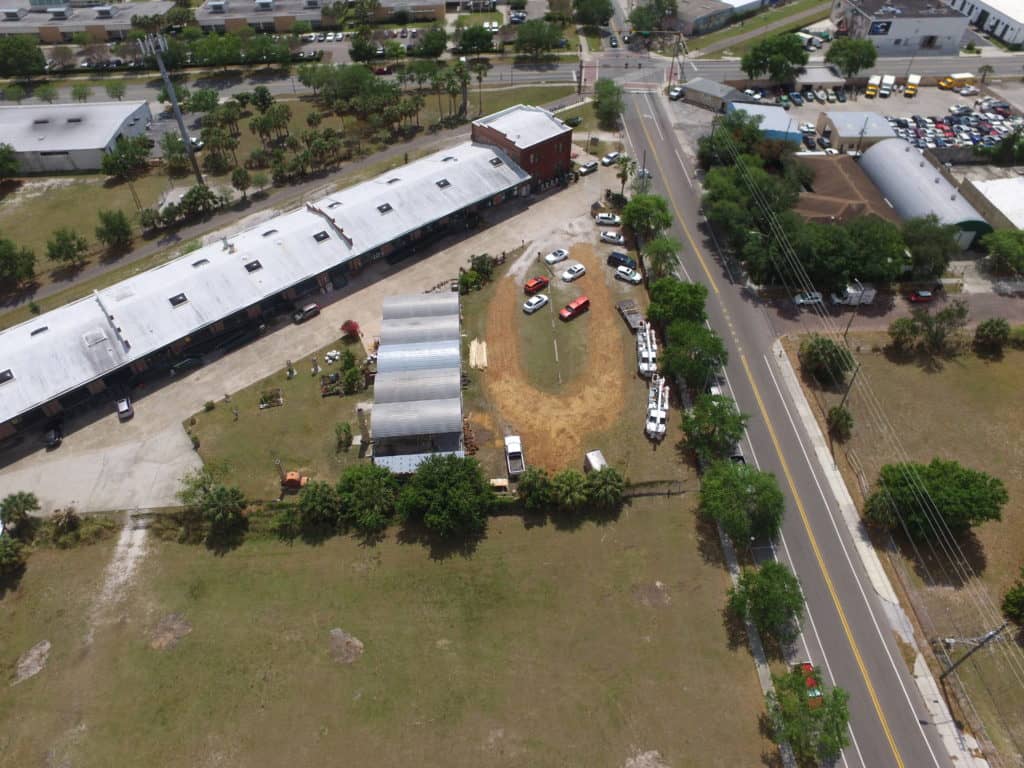
An aerial view of the site that Joe Furst hopes to transform from vacant industrial land to a mixed-use development. The Morean Center for Clay, located in the old train depot, is at the top. Photo provided.
Furst, business leaders, residents and city council members all spoke in favor of the TOD initiative during an April 2022 meeting. “Now is the time to be bold and move forward aggressively with zoning that will fit the needs of our changing city,” said Jason Mathis, CEO of the St. Petersburg Downtown Partnership.
The PSTA study focused on zoning changes within a quarter mile of SunRunner stations. Councilmember Gina Driscoll stressed that she wanted to include more of the Deuces corridor and Warehouse Arts District.
Councilmember Ed Montanari said he was “ready to move forward right now” during that meeting. A year later, the council will likely approve the consent agenda item funding the study’s implementation without discussion.
“Because of the nature of 22nd Street, in particular … part of the recommendation suggested that the study area should be a half mile, much larger than any of the other station areas that are being studied up and down the bus rapid transit line,” Furst said.
Planning agency Kimley-Horn’s study recommended an eight to 12-story maximum building height in the “urban” TOD zoning areas around the 22nd Street and Grand Central stations. That would decrease to six stories moving west along Central Avenue and increase to eight at 66th Street North and South.
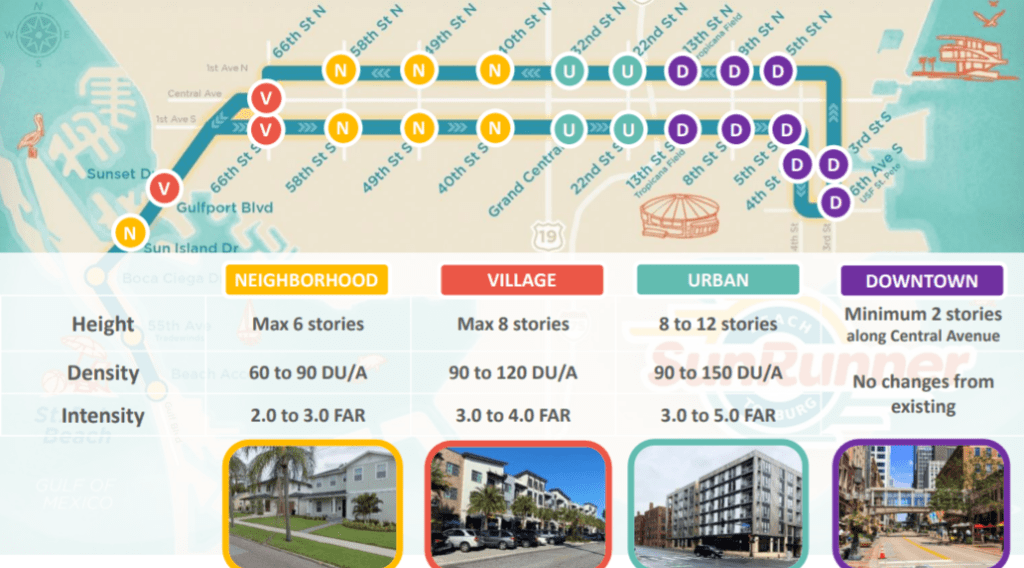
A slide from Kimley Horn’s 2022 presentation shows the height, density and intensity for each identified place category.
Elihu Brayboy, owner of Chief’s Creole Café and several properties along the Deuces corridor, is a prominent advocate for increasing density further south down 22nd Street. He previously said that local officials changing the zoning for developments just to the north but not extending into predominantly Black areas “has a racial overtone.”
Furst said there are discussions to increase density allowances farther south along the corridor to ensure the area can grow according to the community’s desire. However, he noted TOD planning and policy dictate the current initiative’s boundaries.
“It doesn’t mean that there shouldn’t be additional studies and connective-tissue targeted zoning done immediately following this,” Furst added. “But for the purposes of transit-oriented development and station planning, it is all based on the idea of distance from the stop. Again, there is nothing to review yet. This won’t get started until hopefully soon after the 20th.”
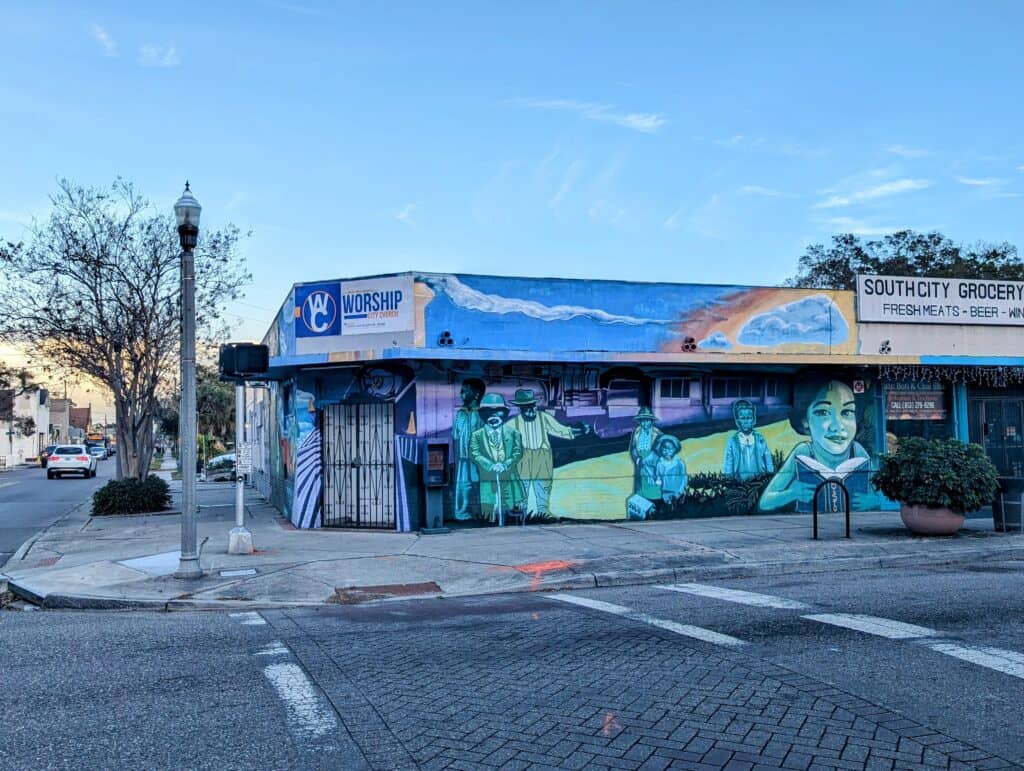
A small grocer at the intersection of 22nd Street South and 9th Avenue, also known as Deuces corner. Photo by Mark Parker.
St. Petersburg is the fourth municipality Furst has worked with on zoning initiatives that account for changing development patterns. He expressed his desire for the most co-collaborative process possible.
Furst said the open exchange of ideas among stakeholders is critical to successful implementation, and “the process hasn’t been exactly to my liking.” However, he remains optimistic and expects further collaboration among developers, community leaders and local officials as the initiative progresses.
He said stakeholders could view the TOD initiative as a pilot program and that “a rising tide really does lift all boats.”
“You have to start somewhere,” Furst said. “And I think we should be supporting each other regardless of where the boundary lines happen to fall.”


